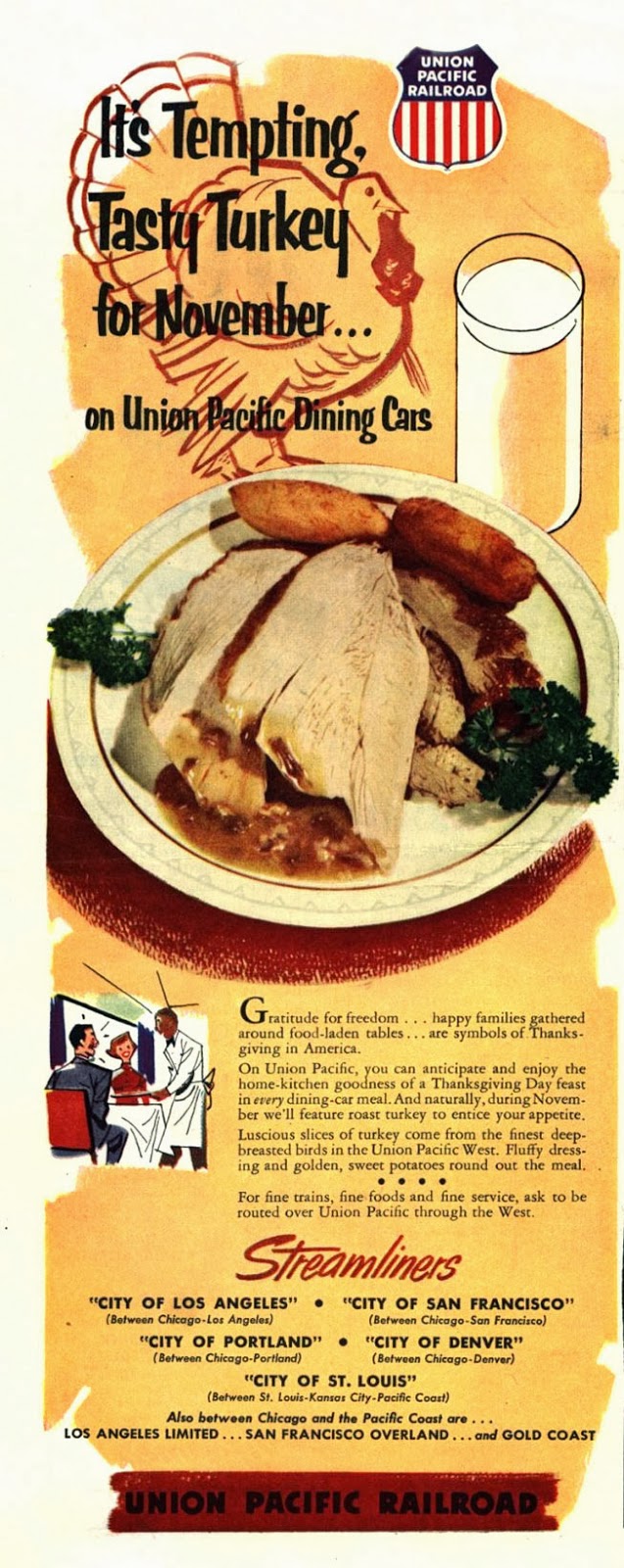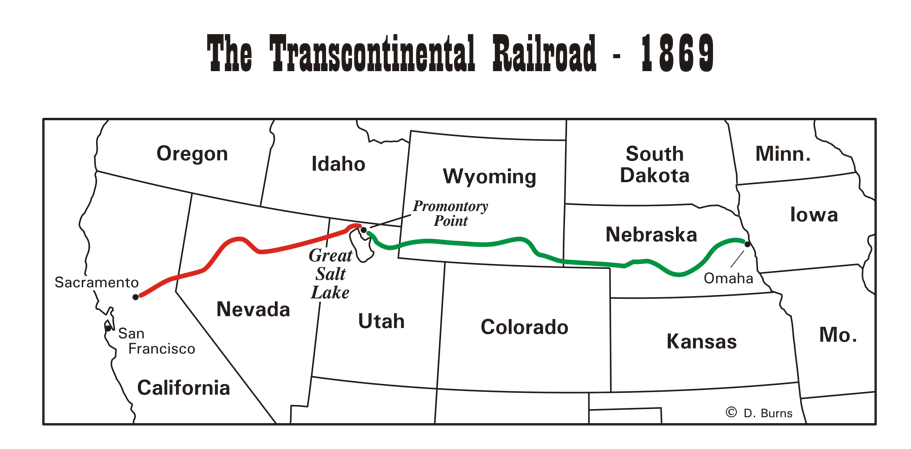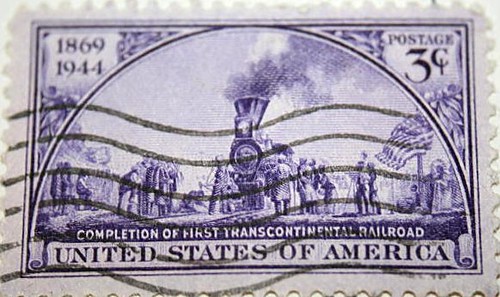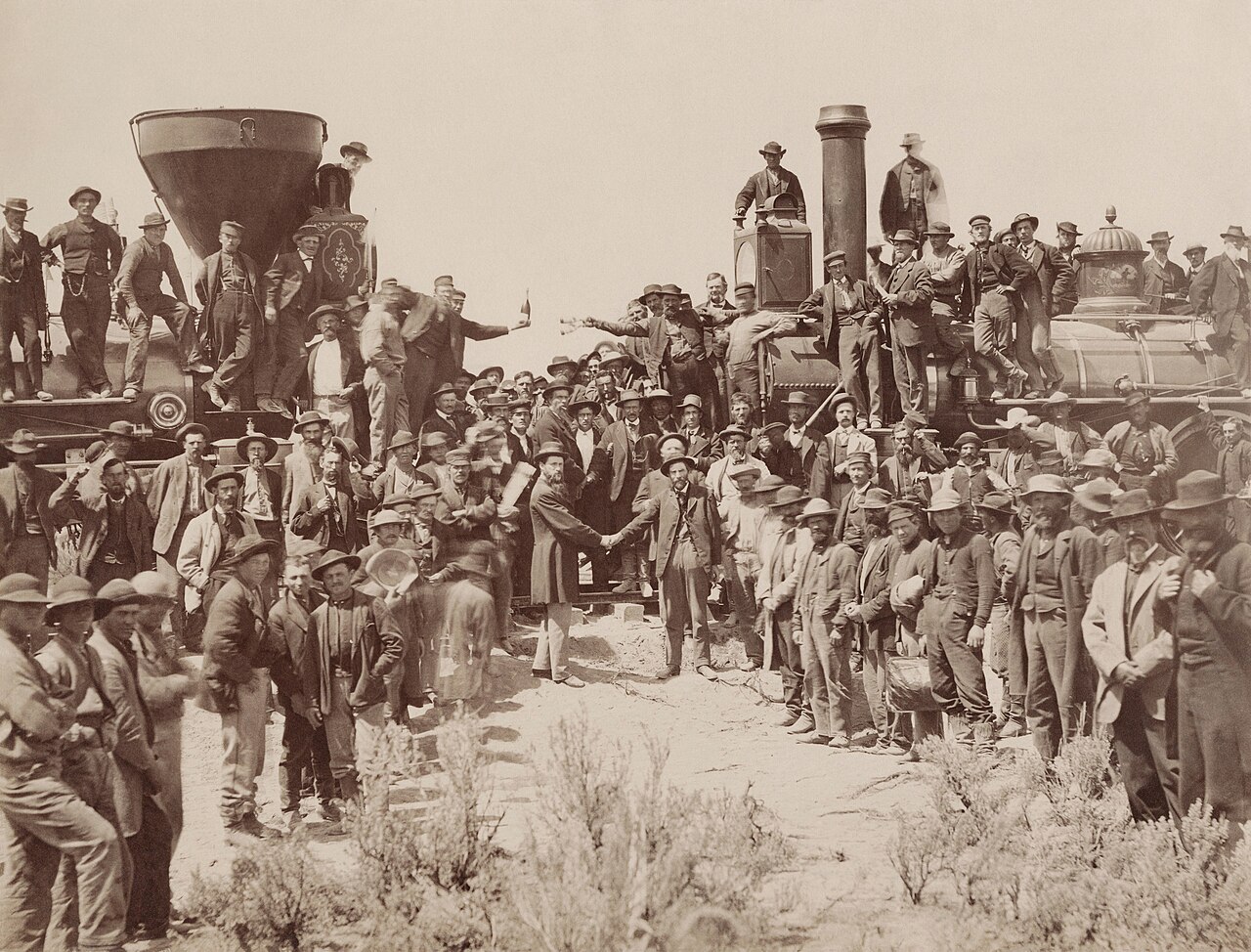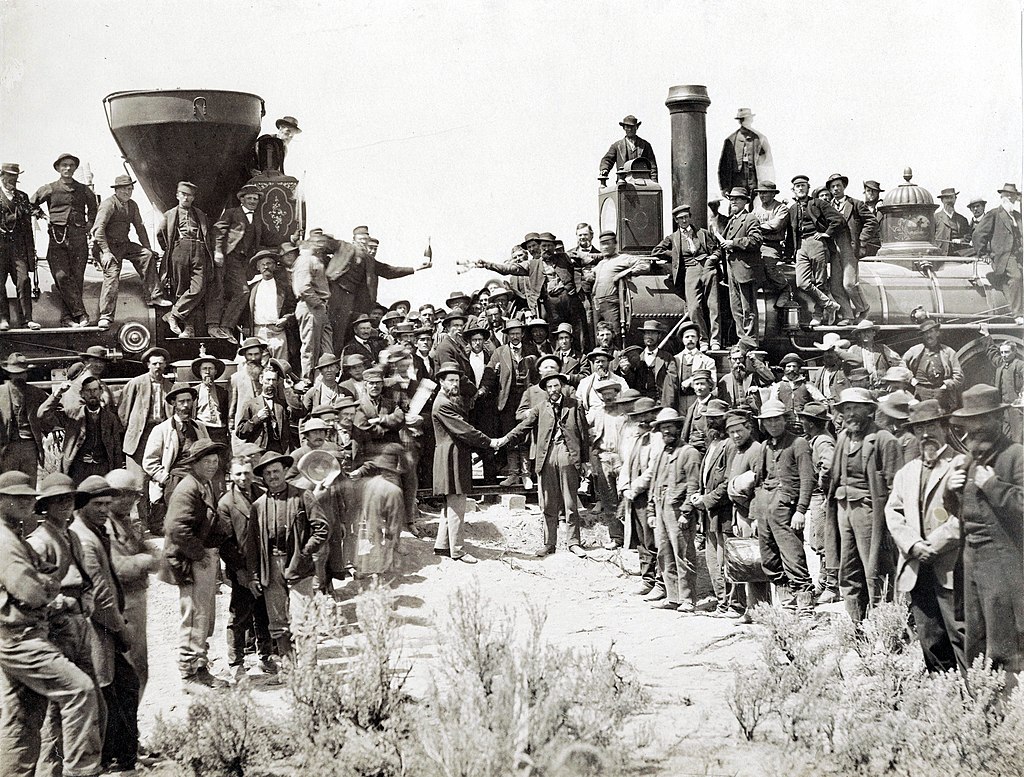
Photo by A.J. Russell of the celebration following the driving
of the "Last Spike" at Promontory Summit, Utah.
On May 10, 1869, the presidents of the Union Pacific and Central
Pacific railroads met in Promontory, Utah, and drive a ceremonial
last spike into a rail line that connects their railroads. This made transcontinental railroad travel possible for the first time in U.S.
history. No longer would western-bound travelers need to take
the long and dangerous journey by wagon train.

The original "golden spike", on
display at the Cantor Arts Museum.



